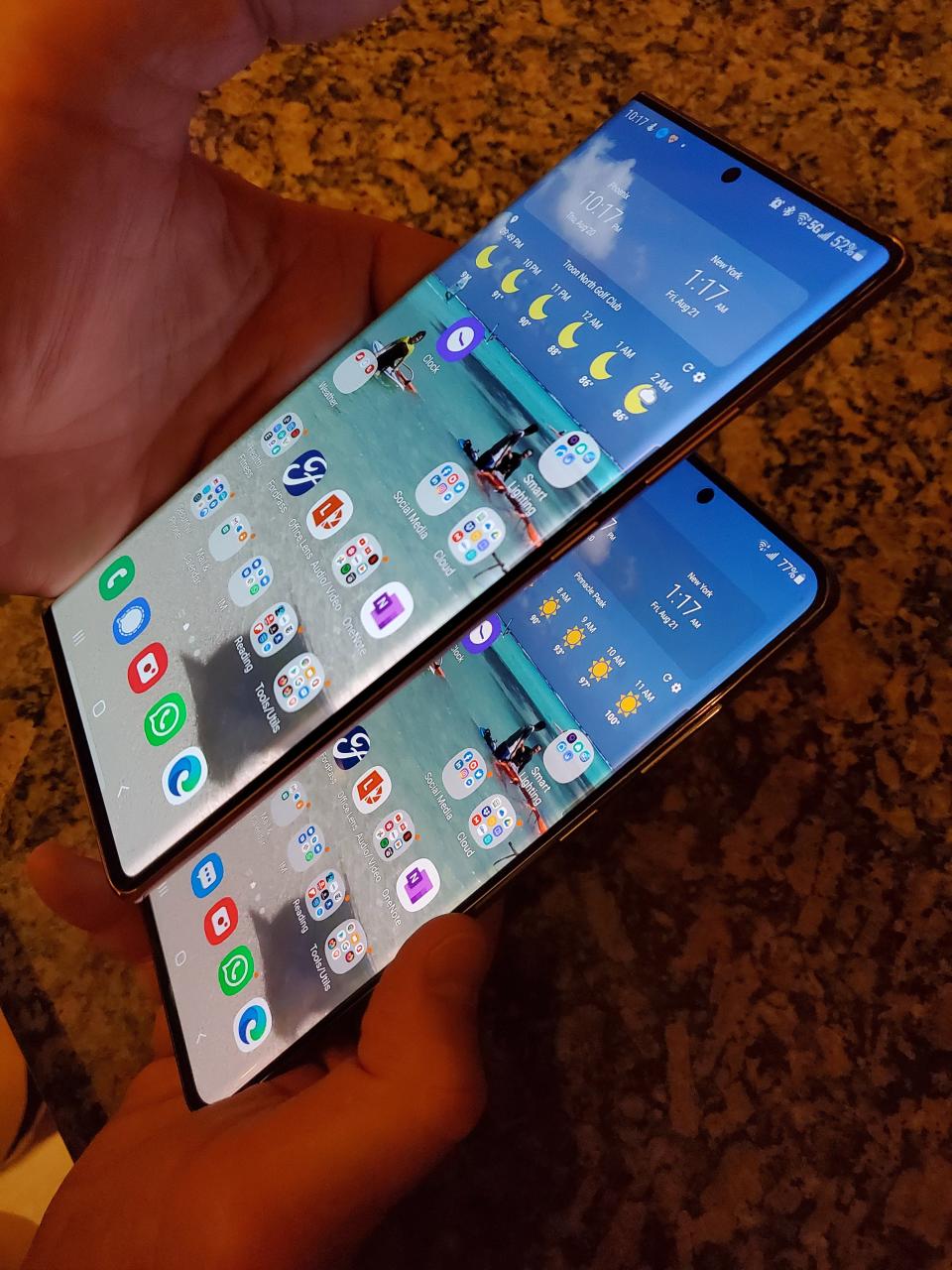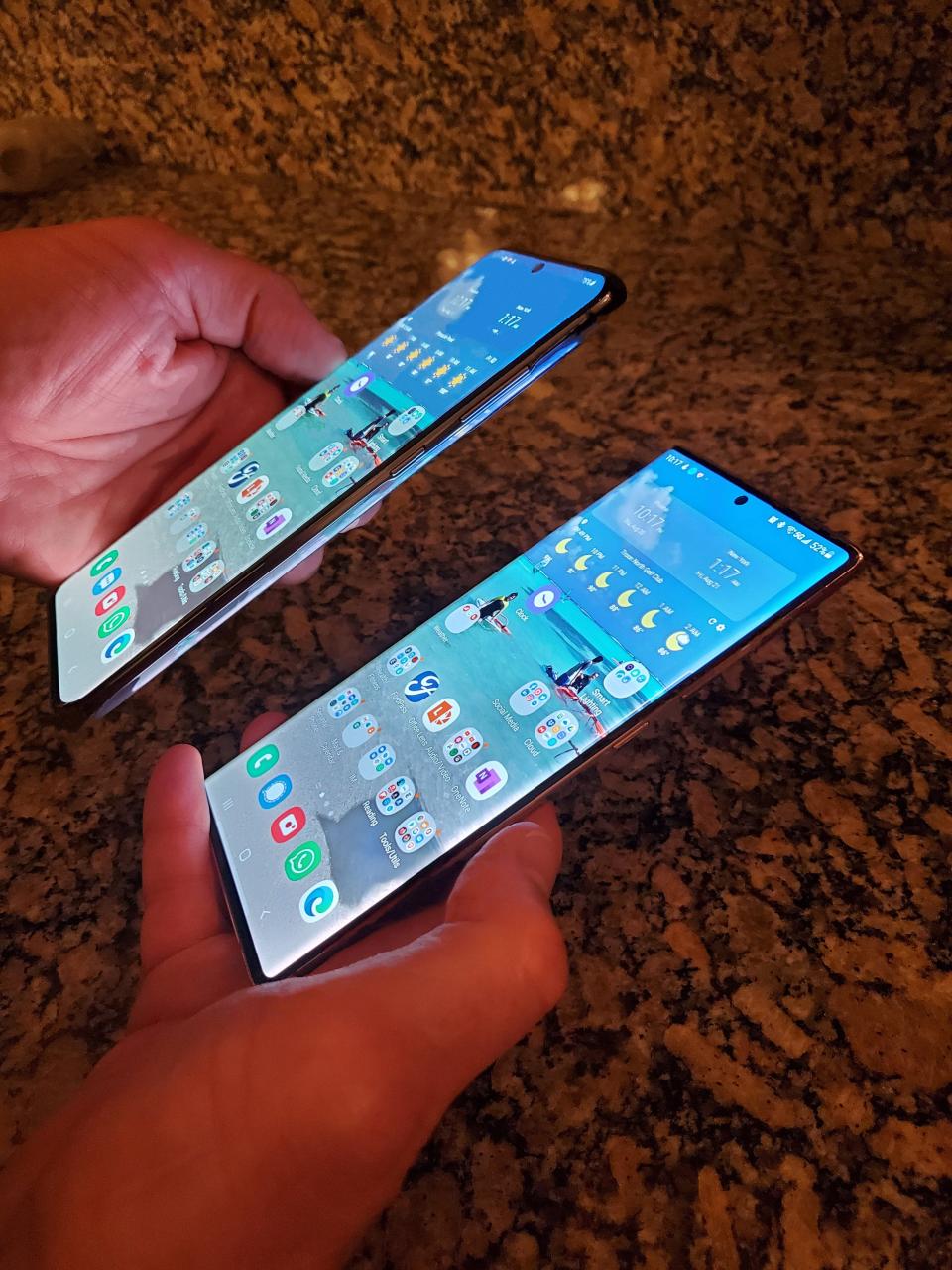Samsung's Note20 Ultra: A phablet for phone lovers?
Samsung brand loyalists typically fall into one of two camps: those who prefer the Galaxy S-series, and those drawn to the Galaxy Note family. But this year could be different. Because for the first time, the latest Note device – that’s the Samsung Galaxy Note20 Ultra, which went on sale last week for $1,299.99 – is as much a phone lover’s phone as it is for phablet fans.
Indeed, the Note20 Ultra won’t just please Note enthusiasts. It’s also a great no-compromise smartphone, with the added benefit of a handy, capable, built-in pen for work and play.
In case it’s not obvious, I lean S series. Of course, I do like the Note’s signature S Pen, and appreciate the innovations Samsung packs into it. But each summer, when I start to evaluate the latest Note device, I can’t help but notice that integrating the S Pen has forced design compromises. Specifically, the Note is invariably thicker, heavier and more power-hungry than the S series that preceded it.
Fitbit on offense: Wearables maker signals it is time to take on Apple and Samsung with new smartwatches
Reviewed.com: The new Samsung Galaxy devices

But not this time. When the Note20 Ultra arrived for evaluation two weeks ago, I noticed right away how svelte it was. Impressively, it’s actually thinner and lighter than the S20 Ultra. And, as I’ve come to see, it has great battery life to boot.
Samsung Note20 Ultra, so svelte. How?
Of course, Samsung hasn’t changed design priorities for its flagship phone lineups. Rather, it’s more about the timing of technology advancements, and how they intersected with the cadence of Samsung’s flagship phone releases. Regardless of the reason, however, the Note20 Ultra presents the best opportunity S series fans may ever have to check out the Note lineup.
For most of us, the rise of 5G means we’re on the cusp of faster, more responsive connectivity. But for smartphone engineers, the next-generation cellular standard has presented quite a design challenge. For one thing, 5G modems draw considerably more power and generate far more heat than LTE radios. As well, antenna design and placement adds another new obstacle, particularly for the high-speed mmWave bands.
To accommodate these hurdles, the first 5G phones to market last year were taller, thicker and heavier than their 4G counterparts. The three LTE Galaxy S10s that Samsung introduced in 2019, for example, continued down the path toward thinner and lighter smartphones.
But the Galaxy S10 5G, Samsung’s first 5G device, bucked the trend. It weighed 198 grams and was 7.94mm thick, compared with 175 grams and 7.8 mm thickness for the S10+, the largest LTE device in the family. Interestingly, the dimensions for the Note10+, Samsung’s first 5G-enabled phablet, were almost identical to the S10 5G – even with the added S Pen. So it seemed as though Samsung was on the path to miniaturization.
But when the all-5G S20 series was released in February, the top-of-the-line S20 Ultra turned out to be even thicker and heavier than the Note10+. Why?
With the S20 series, Samsung introduced another new innovation: a sophisticated camera system, complete with four lenses, including a 48MP zoom and a 108MP wide-angle. And that demanded some space of its own.
Take note: Note20 Ultra is one of a kind
Given the Note20 Ultra’s impressive physique for a 5G device, it would seem that Samsung’s engineers now have their arm around both the 5G and new camera design hurdles, and are once again back on the path of miniaturization.
So you can expect the next marquee phone – the S30 Ultra, if history is a guide – to be thinner and lighter than either the S20 Ultra or the Note20 Ultra. And all will be right with the world.
It also means that, barring another perfect storm of innovation and timing, we may never see another Note device sleeker than its S-series predecessor.

Note20 may convert phone-first folks
So if you’re the phone-first sort that’s always been curious about the S Pen, then this could be that rare opportunity to dive in without sacrificing a thing.
It’s sleek and comfortable. The photo and video options are as accessible as they are impressive. The display is gorgeous. And battery life is great. I find that I still have around 40% charge remaining when I’m getting ready for bed.
Of course, this S Pen is the most capable yet. I’ve used the gesture capabilities to present PowerPoint, and I’ve edited and marked up documents writing on-screen. It’s even better on a big screen. With DeX, Samsung’s integrated windows platform, you can connect wirelessly to a display with a single click. Once you do, you’re served up a PC-style workspace – complete with Microsoft Office apps.
But be careful, S-series fans: The Note20 Ultra could be the one that flips your loyalties.
USA TODAY columnist Mike Feibus is president and principal analyst of FeibusTech, a Scottsdale, Arizona, market research and consulting firm, and producer of the Privacy Now interview series on YouTube. Reach him at mikef@feibustech.com. Follow him on Twitter @MikeFeibus.
This article originally appeared on USA TODAY: Samsung Note20 Ultra: A device for smartphone and phablet lovers alike

